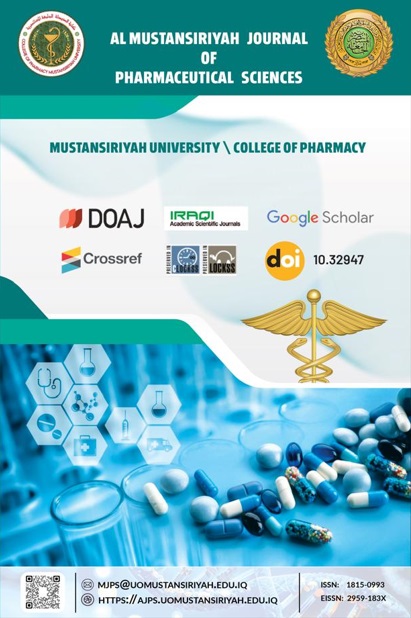Abstract
Nebivolol hydrochloride (NEB) is a 3rd generation highly selective β1-blocker with
antihypertensive properties, the elimination half-life is about 10 hrs and the oral
bioavailability is about 12%.
The study was aimed to develop nanostructured lipid carriers (NLC) for transdermal
delivery of NEB.
The study involves two separate parts, part 1 (current) involves preparation and
characterization of NEB loaded NLCs (NEB-NLCs). Part 2 of the study, NEB-NLCs based
gel was formulated using gelling agent carbapol 934 as transdermal delivery system using rat
skin. Part 2 of the study will be presented separately in the forthcoming issue.
The current investigation describes the effect of type and concentration of different
solid lipids, liquid lipids, and surfactant/co-surfactant on the characteristics of NLC such as
particle size, polydispersity index, zeta potential, drug entrapment efficiency, and drug release
profile. Transmission electron microscopy, scanning electron microscope and atomic force
microscope revealed nearly spherical shape NLC with negligible effect of liquid lipid (oleic
acid) content on the particle morphology. The differential scanning calorimetry demonstrated
depression in the melting point and crystallinity index of the NLCs with increasing the
amount of liquid lipid. The in vitro drug release studies demonstrated that 93% of the drug
was released over 24hrs. The NEB-NLCs possessed a biphasic release pattern characterized
by a rapid initial release followed by a sustained release.
Keywords: Nebivolol hydrochloride; Nanostructured lipid carriers; Transdermal delivery.
antihypertensive properties, the elimination half-life is about 10 hrs and the oral
bioavailability is about 12%.
The study was aimed to develop nanostructured lipid carriers (NLC) for transdermal
delivery of NEB.
The study involves two separate parts, part 1 (current) involves preparation and
characterization of NEB loaded NLCs (NEB-NLCs). Part 2 of the study, NEB-NLCs based
gel was formulated using gelling agent carbapol 934 as transdermal delivery system using rat
skin. Part 2 of the study will be presented separately in the forthcoming issue.
The current investigation describes the effect of type and concentration of different
solid lipids, liquid lipids, and surfactant/co-surfactant on the characteristics of NLC such as
particle size, polydispersity index, zeta potential, drug entrapment efficiency, and drug release
profile. Transmission electron microscopy, scanning electron microscope and atomic force
microscope revealed nearly spherical shape NLC with negligible effect of liquid lipid (oleic
acid) content on the particle morphology. The differential scanning calorimetry demonstrated
depression in the melting point and crystallinity index of the NLCs with increasing the
amount of liquid lipid. The in vitro drug release studies demonstrated that 93% of the drug
was released over 24hrs. The NEB-NLCs possessed a biphasic release pattern characterized
by a rapid initial release followed by a sustained release.
Keywords: Nebivolol hydrochloride; Nanostructured lipid carriers; Transdermal delivery.
Keywords
Nebivolol hydrochloride; Nanostructured lipid carriers; Transdermal delivery
